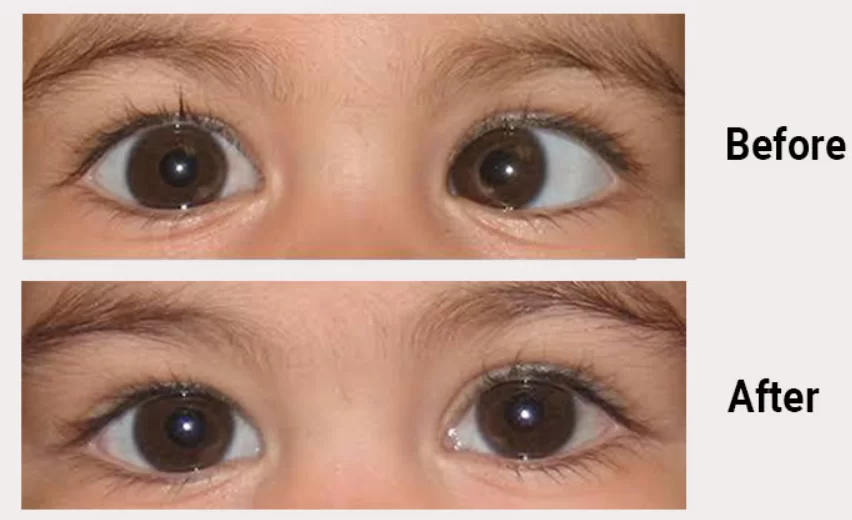NDP EyeCare | Dr. N D Patil | Dr. Gaurav Patil | Cataract | Glaucoma | Oculoplasty | LASIK
Our Latest Equipment is Best to keep your Vision perfect like Eagle!

Understanding Squint (Strabismus) & Its Impact on Vision
Why Choose Squint Surgery
Dry eye syndrome occurs when your eyes fail to produce enough tears or when tears evaporate too quickly. Tears are essential because they lubricate, protect, and nourish the surface of the eye. When tear production reduces or tear quality weakens, the eyes feel gritty, irritated, or uncomfortable.
Dr. Patil explains that dry eyes are not just about discomfort—they can lead to blurred vision, increased risk of infection, and corneal damage if left untreated. Therefore, early diagnosis and proper treatment become crucial for maintaining healthy vision.
About Dr. N. D. Patil: Trusted Squint Surgeon in Nagpur
In Nagpur, Dr. N. D. Patil ranks among the most trusted ophthalmologists performing squint surgery. Over his many years of practice, he has built expertise in treating various types of strabismus in children and adults. He diagnoses each case comprehensively, plans individualized treatment, and performs surgery meticulously.
He graduated with MBBS and MS in Ophthalmology, then gained academic as well as clinical experience at premier institutions. He serves patients in Nagpur and surrounding districts, offering surgical and nonsurgical strabismus care.
Types of Squint & Indications for Surgery
Squint can present in multiple forms. Dr. Patil evaluates each type and decides whether surgery is needed. Some common types include:
Esotropia (eye turns inward)
Exotropia (eye turns outward)
Hypertropia / Hypotropia (eye turns upward/downward)
Intermittent squint (alignment varies; sometimes controlled)
Concomitant vs incomitant squint (movements either parallel or restricted)
Surgery becomes necessary when:
A misalignment persists despite spectacles or exercises
The squint causes double vision or diplopia
It leads to cosmetic concern or psychological distress
There is risk of amblyopia, especially in children
The squint is large or progressive
Dr. Patil examines muscle function, ocular motility, and binocular fusion before recommending surgery.
Preoperative Assessment & Planning
Before proceeding with surgery, Dr. Patil undertakes thorough evaluation:
Medical and ocular history
He asks about onset of squint, past treatments, vision in each eye, systemic conditions like thyroid disease or neuromuscular disorders.Refraction and visual acuity testing
He checks refractive errors, corrects them first, and evaluates best corrected vision.Ocular motility and alignment measurement
He tests eye movements in all gaze directions and measures the angle of deviation (using prism cover test).Binocular vision and fusion assessment
He checks for suppression, stereoacuity, and fusion potential.Other ocular health checks
He rules out amblyopia, assesses anterior segment, retina, and any coexisting eye disease.
Only after this detailed analysis does he plan the surgery—deciding which muscles to adjust, how much to recess or resect, and whether bilateral surgery is needed.
Squint Surgery Techniques & Procedure
Dr. Patil uses advanced surgical techniques tailored to each patient. He generally performs procedures under local or general anesthesia, depending on patient age and cooperation. His steps include:
Creating small conjunctival incisions to access the extraocular muscles
Dissecting and isolating the relevant muscles
Recession (weakening by moving muscle backwards) or resection (strengthening by shortening)
Adjustable sutures in selected cases (allowing postoperative adjustment)
Closing conjunctiva with fine sutures
He adapts techniques (such as hang-back sutures or adjustable surgery) for complex cases or restricted motility.
During surgery, he carefully monitors tissue tension and alignment to minimize overcorrection or undercorrection.
Postoperative Care, Recovery & Follow-Up
Successful outcomes depend on diligent aftercare. Dr. Patil provides a structured postoperative plan:
He prescribes antibiotics and anti-inflammatory eye drops to prevent infection and reduce swelling
He advises patching of the dominant eye in children when needed to encourage use of the weaker eye
He schedules regular follow-ups (day 1, day 7, one month, three months) to monitor healing and alignment
He may make small suture adjustments (in adjustable cases) on the day of surgery
He monitors for complications like overcorrection, undercorrection, infection, scarring, or motility restriction
Most patients resume normal daily activities within a week. He guides return to school, work, and sports, gradually removing activity restrictions.
Book an Appointment Today
If you are searching for the best glaucoma specialist in Nagpur, look no further than Dr. N.D. Patil at the Centre of Advanced Eye Care. Early intervention is the key to preserving your sight. So, don’t wait until it’s too late—schedule your consultation today and take the first step toward protecting your vision.

